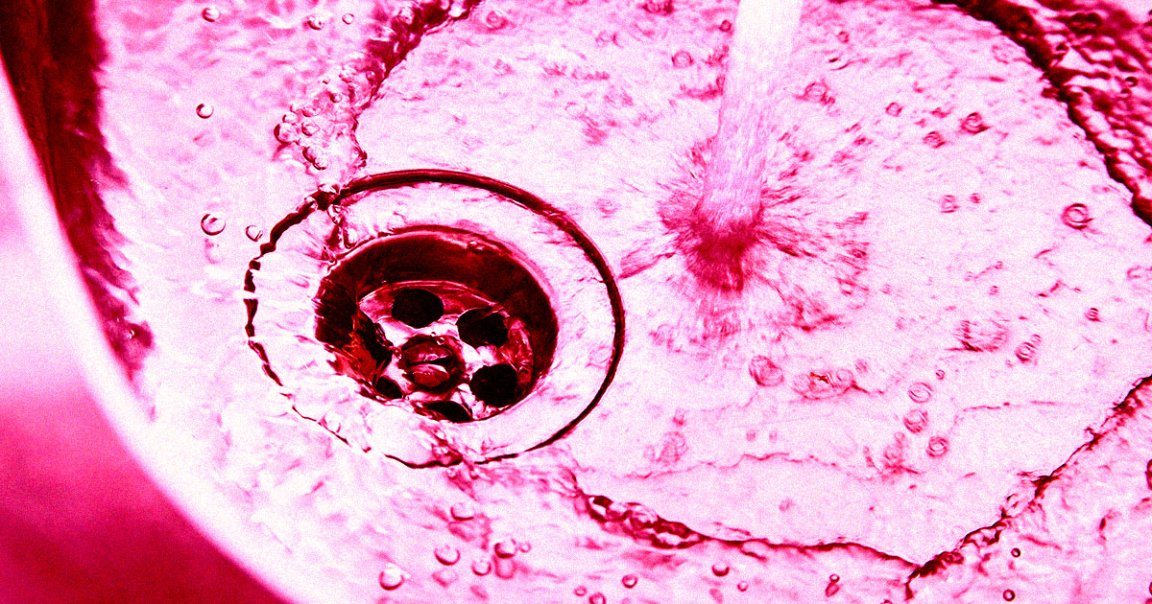
At least 45 percent of all US tap water could be laced with at least one type of per – and polyfluoroalkyl substances or PFAS, a group of toxic “forever chemicals,” according to a new study conducted by the United States Geological Survey (USGS).
There are roughly 12,000 of these man-made chemicals in existence, according to the study, and are dubbed “forever chemicals” due to the fact that they hardly ever break down in the environment or in the human body.
The effects these chemicals have on our health are still not entirely understood, but they have been associated with several serious health risks, including certain types of cancer, and reproductive effects in pregnant people, as The Washington Post reports.
These toxic compounds have been discovered in a number of unthinkable places, including takeout containers and even toilet paper.
Despite their suspected toxicity, they continue to be used in consumer products, including clothing, cosmetics, and food packaging. And now, it seems that they have made their way into our tap water as well, meaning millions of Americans are likely directly consuming them.
“Millions of people have been drinking a toxic forever chemical linked to cancer all their lives and are only discovering it today,” senior vice president for government affairs at the Environmental Working Group Scott Faber, who was not involved in the study, told the WaPo of the research.
And human health isn’t the only concern, as PFAS have negative impacts on the health of animals and the environment.
According to the USGS, the study is the largest and most comprehensive of its kind thus far, with scientists examining tap water samples from over 700 locations across the country over the course of a five-year period. Per the WaPo, these locations were varied, from water taken from protected lands and “residential areas with no known PFAS sources,” to locations near previously-identified high-risk waste sites.
As NPR reports, the USGS scientists’ choice to examine tap water was very intentional, as most state and federal testing is usually done in groundwater wells and the water treatment plants they supply.
“The USGS study specifically focused on collecting water directly from a homeowners tap,” Kelly Smalling, a USGS research chemist and the study’s lead author, told NPR, as it’s “where exposure actually occurs.”
Based on their findings, the USGS scientists estimate that those in urban areas are at a 75 percent risk of PFAS exposure, while folks in more rural areas face a 25 percent risk.
There are also some hotspots, with Smalling telling NPR that potential high-risk areas include “the Great Plains, Great Lakes, Eastern Seaboard, and Central/Southern California regions.”
Though the Environmental Protection Agency (EPA) introduced some federal drinking water limits to PFAS back in March, those guidelines have yet to go into effect.
They’re also pretty flawed. As Smalling told NPR, the guidelines entirely exclude the one in eight Americans who get their drinking water from private wells.
According to some experts, however, all regulation is too little, too late if we fail to throttle PFAS at their man-made source.
“We need to regulate the companies that are producing these chemicals,” Harvard epidemiologist Carmen Messerlian, who was not involved in the study, told the WaPo. “By the time they hit our water, our food, our children’s mouths and our bodies, it really is too late.”
The EPA recently come under fire for failing to halt production at a major food and cosmetic packaging manufacturer that’s alleged to have repeatedly lied about whether its products contained the cancer-linked chemical chains.
Simply put: it’s a pretty grim situation. And right now, it’s unclear how the pervasiveness of these chemicals can effectively be countered on a large scale.
Fortunately, some states have recently passed some meaningful PFAS-related legislation. In the meantime, the USGS study will hopefully provide US citizens with more awareness of what, exactly, they might be drinking.
“We really hope that this study gives the average American some information about the quality of their drinking water,” Smalling told the WaPo.
More on forever chemicals: Scientists Discover That Toilet Paper Contains Toxic “Forever” Chemicals